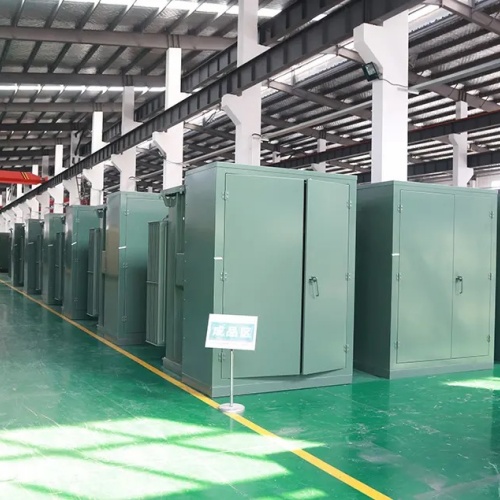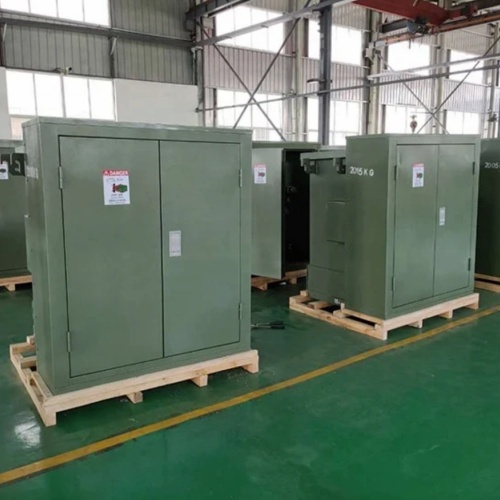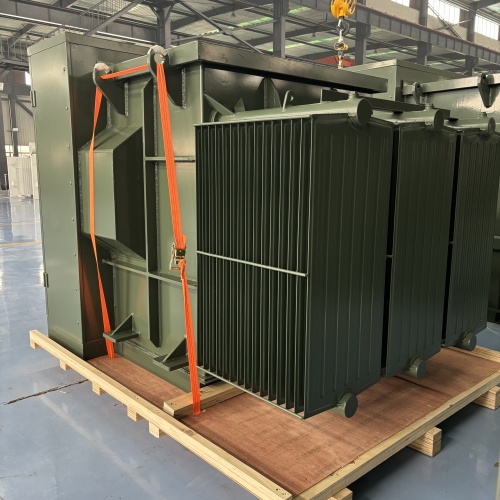Three Phase Pad Mount Transformer For Bitcoin Mining in California
Tengyi High-Efficiency Three-Phase Transformers for Bitcoin Mining: Powering Crypto Farms in California & Beyond
Bitcoin mining is a power-hungry industry where profitability hinges on energy efficiency and operational reliability. In regions like California, where electricity costs are high and environmental regulations are stringent, miners face dual pressures: reducing energy waste while maintaining 24/7 uptime for their ASIC rigs.
Tengyi three-phase pad-mounted transformers have emerged as a critical solution, bridging the gap between high-voltage utility grids and the low-voltage demands of mining hardware. As a leading exporter of specialized mining transformers, Tengyi recently demonstrated its expertise by deploying 40+ units (ranging from 1250kVA to 5000kVA) for a large-scale Bitcoin mining facility in California.
Project Overview
Location
Remote desert site in California (high temperatures, dust exposure).
Parameters
- Tengyi supplied 40+ units, including 2600kVA, 3000kVA, and 5000kVA transformers.
- Voltage ratios: 12.47kV/0.415kV (primary grid interface) and 13.8kV/0.415kV (backup).




Here, we will show how Tengyi transformers address the unique challenges of crypto mining while optimizing ROI.
For Optimal Performance in American Regions, Tengyi Technical Specifications for Bitcoin Mining Transformers
Capacity Matching
- Mining farms require scalable solutions. Smaller pods may use Tengyi’s 1250kVA transformers, while high-density operations deploy 5000kVA units to support thousands of ASIC miners.
- Example: A facility with 10,000 Antminer S19 rigs (3,250W each) needs ~32.5MW, achievable with multiple Tengyi 3000kVA or 5000kVA transformers.
Custom Voltage Ratios
- California’s grid often operates at 12.47kV or 13.8kV, requiring step-down configurations like 12.47kV/0.415kV or 35kV/0.415kV.
- Tengyi’s bespoke tap settings ensure compatibility with non-standard grid voltages, preventing downtime during peak loads.
Efficiency Standards
- Tengyi’s DOE Tier 3-certified transformers achieve 98%+ efficiency, reducing energy losses and saving miners up to $500,000 annually in large-scale operations.
Regulatory Certifications
- Tengyi transformers meet California’s Title 20/24 energy standards and hold UL/cUL certifications for safety in high-risk environments.
Environmental Resilience
- IP55-rated enclosures and corrosion-resistant coatings protect against dust, moisture, and extreme temperatures in California’s desert climate.
What is a Three-Phase Pad Mount Transformer?
A three phase pad mount transformer is a static electrical device designed to transfer electrical energy from one circuit to another through electromagnetic induction. This process allows for the voltage to be stepped up (increased) or stepped down (decreased) without changing the frequency. The basic function of a transformer involves two or more coils of wire, known as windings, that are electrically isolated but magnetically linked. When an alternating current (AC) flows through one winding (the primary winding), it creates a magnetic field. This magnetic field induces a voltage in the other winding (the secondary winding), thereby transferring electrical energy.
Transformers are essential in electrical power systems because they enable the efficient transmission and distribution of electricity. High-voltage transmission reduces current, minimizing energy loss due to resistance in the wires. Transformers then step down the voltage to levels suitable for industrial, commercial, and residential use.
Three-Phase Pad Mount Transformer Components
Here are the key components of a pad mount transformer:
Core:
The core is typically made of laminated silicon steel, which provides a path for the magnetic flux. It is designed to minimize energy losses due to hysteresis and eddy currents.
Windings:
Transformers have two sets of windings: the primary winding (connected to the high-voltage side) and the secondary winding (connected to the low-voltage side). These windings are made of copper or aluminum and are carefully insulated to prevent short circuits.
Insulation:
Insulation materials, such as oil, paper, or epoxy, are used to electrically isolate the windings and core. Proper insulation is critical for preventing breakdowns and ensuring the safe operation of the transformer.
Cooling System:
Transformers generate heat due to energy losses in the core and windings. Cooling systems, which may include oil-filled tanks with radiators or dry-type air-cooled designs, are used to dissipate this heat and prevent overheating.
Tank and Enclosure:
The tank houses the core and windings, providing physical protection and containing the insulating fluid (if applicable). The enclosure is designed to be tamper-proof and weather-resistant, ensuring the safety and reliability of the transformer.
Bushings:
High-voltage bushings connect the high-voltage cables to the transformer.
Low-Voltage Compartment:
Contains the output connections for distributing low-voltage power.
Tap Changers:
Allow adjustment of the voltage transformation ratio.
Specific Advantages of Using Three-Phase Pad Mount Transformers For Bitcoin Mining
Three-phase pad mount transformers offer specific advantages for Bitcoin mining operations:
High Power Capacity:
Bitcoin mining operations require significant amounts of electrical power. Three-phase pad mount transformers can handle the high power demands of mining farms more efficiently than single-phase transformers.
Stable Power Supply:
The stable and consistent power delivery of a three-phase system is crucial for the continuous operation of mining equipment. Voltage fluctuations can damage sensitive electronic components and reduce mining efficiency.
Scalability:
As mining operations grow, the power requirements increase. Three-phase pad mount transformers provide the scalability needed to support expanding mining farms without the need for significant infrastructure changes.
Reduced Downtime:
The reliability of three-phase pad mount transformers minimizes downtime, ensuring that mining operations can run continuously. This is critical for maximizing revenue in the highly competitive Bitcoin mining industry.
Cost-Effectiveness:
While the initial investment in a three-phase system may be higher than a single-phase system, the long-term cost savings due to increased efficiency, reduced downtime, and scalability make it a cost-effective solution for Bitcoin mining.
Safety:
Pad-mounted transformers are enclosed and designed to be safe for public access, reducing the risk of electrical hazards.
Key Features and Specifications of Choosing Transformers for Bitcoin Mining
Voltage Regulation: Importance of Maintaining Stable Voltage
Voltage regulation refers to a transformer’s ability to maintain a stable output voltage under varying load conditions. It’s a critical factor in Bitcoin mining because mining equipment, such as ASICs (Application-Specific Integrated Circuits), are sensitive to voltage fluctuations. Unstable voltage can lead to:
- Reduced Efficiency: Mining equipment may operate less efficiently, resulting in lower hash rates and reduced profitability.
- Equipment Damage: Voltage spikes or drops can damage sensitive electronic components, leading to costly repairs and downtime.
- Data Corruption: Unstable power can cause data corruption, leading to errors in mining operations.
Good voltage regulation ensures that the mining equipment receives a consistent and reliable power supply, which maximizes performance and extends the lifespan of the hardware. Transformers with a voltage regulation of ±1% to ±3% are generally recommended for Bitcoin mining applications.
KVA Rating: How to Determine the Appropriate Size for a Mining Operation
The KVA (kilovolt-ampere) rating of a transformer indicates its apparent power capacity, which is the total power the transformer can supply. Determining the appropriate KVA rating is essential for ensuring that the transformer can handle the power demands of the mining operation without overloading. Here’s how to determine the right size:
- Calculate Total Power Consumption: Add up the power consumption (in watts) of all mining equipment, including ASICs, cooling systems, and other electrical devices.
- Convert Watts to KVA: Divide the total power consumption in watts by 1000 to convert it to kilowatts (KW). Then, divide the KW value by the power factor (PF) of the mining equipment to get the KVA. (KVA = KW / PF). The power factor is typically around 0.8 to 0.9 for mining equipment.
- Add a Safety Margin: It’s advisable to add a safety margin of 20% to 25% to the calculated KVA to account for future expansion and unexpected load increases.
- Select the Transformer: Choose a transformer with a KVA rating that meets or exceeds the calculated KVA with the safety margin.
For example, if a mining operation has a total power consumption of 500 KW and a power factor of 0.8, the KVA would be 625 KVA. Adding a 20% safety margin, the recommended transformer KVA rating would be approximately 750 KVA.
Efficiency: Why High Efficiency is Crucial for Cost Savings
Transformer efficiency is the ratio of output power to input power, expressed as a percentage. High efficiency is crucial for Bitcoin mining due to the continuous and energy-intensive nature of the operations. Even small improvements in efficiency can result in significant cost savings over time.
- Reduced Energy Losses: High-efficiency transformers minimize energy losses in the form of heat, which reduces the amount of electricity wasted.
- Lower Electricity Bills: By reducing energy losses, high-efficiency transformers lower the overall electricity consumption, resulting in lower monthly bills.
- Decreased Carbon Footprint: Efficient transformers contribute to a smaller carbon footprint by reducing the amount of electricity needed from power plants.
Transformers used in Bitcoin mining should ideally have an efficiency rating of 97% or higher. The higher initial cost of a high-efficiency transformer is often offset by the long-term cost savings in electricity bills.
Cooling Methods: Types of Cooling Systems (Oil-Filled, Dry-Type) and Their Suitability
Transformers generate heat due to energy losses in the core and windings, so effective cooling is essential to prevent overheating and ensure reliable operation. The two primary types of cooling systems are:
- Oil-Filled Transformers: These transformers use oil as both an insulating and cooling medium. The oil circulates through the transformer, absorbing heat and dissipating it through radiators.
- Suitability: Oil-filled transformers are suitable for high-power applications and offer excellent cooling performance. However, they require regular oil sampling and maintenance to ensure the oil remains free of contaminants. There is also a risk of oil leaks, which can be an environmental hazard.
- Dry-Type Transformers: These transformers use air as the primary cooling medium. They are typically cooled by natural convection or forced air.
- Suitability: Dry-type transformers are suitable for indoor applications and environments where oil leaks are a concern. They require less maintenance than oil-filled transformers but may have lower cooling capacity, making them less suitable for very high-power applications or environments with high ambient temperatures.
For Bitcoin mining, the choice between oil-filled and dry-type transformers depends on the specific requirements of the mining operation, including the power demands, environmental conditions, and maintenance capabilities.
Safety Features: Overload Protection, Short-Circuit Protection, and Other Safety Measures
Safety features are essential for protecting the transformer and mining equipment from damage and ensuring the safety of personnel. Key safety features include:
- Overload Protection: This feature protects the transformer from overheating due to excessive load. It typically involves circuit breakers or fuses that trip when the load exceeds the transformer’s capacity.
- Short-Circuit Protection: This feature protects the transformer from damage caused by short circuits. It also involves circuit breakers or fuses that quickly interrupt the flow of current in the event of a short circuit.
- Grounding: Proper grounding is essential for preventing electrical shocks and ensuring the safe dissipation of fault currents.
- Temperature Monitoring: Temperature sensors can be used to monitor the temperature of the transformer’s core and windings. If the temperature exceeds a safe level, an alarm is triggered, and the transformer may be automatically shut down.
- Pressure Relief Valves: Oil-filled transformers are equipped with pressure relief valves that release excess pressure in the event of an internal fault, preventing the tank from rupturing.
By incorporating these safety features, Bitcoin mining operations can minimize the risk of electrical accidents and equipment damage, ensuring a safe and reliable power supply.
Installation and Maintenance of Three-Phase Pad Mount Transformers for Bitcoin Mining
Siting Considerations
Proper siting of a three-phase pad mount transformer is crucial for ensuring its efficient and safe operation. Several factors must be considered when selecting the optimal location:
- Optimal Location for Transformer Placement:
- Proximity to Load: The transformer should be located as close as possible to the Bitcoin mining operation to minimize voltage drop and power losses in the distribution cables.
- Accessibility: Ensure the location is easily accessible for maintenance, inspection, and replacement. This includes allowing enough space for service vehicles and equipment to maneuver.
- Clearance: Maintain adequate clearance around the transformer to allow for proper ventilation and prevent obstructions that could impede cooling or access. Follow local electrical codes and regulations for minimum clearance requirements.
- Security: The location should be secured to prevent unauthorized access and protect the transformer from vandalism or theft. Consider fencing, lighting, and surveillance systems.
- Ground Stability: The concrete pad on which the transformer is installed must be stable and level to prevent shifting or tilting, which could damage the transformer.
- Environmental Factors to Consider:
- Temperature: Transformers are designed to operate within a specific temperature range. High ambient temperatures can reduce the transformer’s capacity and lifespan. Consider providing shade or ventilation to mitigate the effects of high temperatures.
- Humidity: High humidity can accelerate corrosion and degradation of transformer components. Ensure the transformer enclosure is properly sealed and consider using corrosion-resistant materials.
- Altitude: At higher altitudes, the air is thinner, which can reduce the transformer’s cooling efficiency. Derating the transformer’s capacity may be necessary at high altitudes.
- Exposure to Elements: Protect the transformer from direct exposure to sunlight, rain, snow, and other elements that can cause damage or accelerate wear.
- Contaminants: Avoid locations with high levels of dust, dirt, or corrosive substances in the air, as these can contaminate the transformer’s insulation and cooling system.
Installation Process
The installation of a three-phase pad mount transformer should be performed by qualified and experienced electricians in accordance with local electrical codes and regulations. Here is a general step-by-step guide:
- Preparation:
- Ensure the concrete pad is properly sized, level, and capable of supporting the weight of the transformer.
- Verify that all necessary permits and approvals have been obtained.
- Gather all required tools, equipment, and materials.
- Placement:
- Carefully position the transformer on the concrete pad, ensuring it is properly aligned and centered.
- Use appropriate lifting equipment to avoid damaging the transformer.
- Connections:
- Connect the high-voltage cables to the transformer’s primary bushings, following the manufacturer’s instructions and local electrical codes.
- Connect the low-voltage cables to the transformer’s secondary terminals.
- Ensure all connections are tight and properly insulated.
- Grounding:
- Connect the transformer’s grounding terminal to a suitable grounding system.
- Verify that the grounding system meets all applicable codes and standards.
- Testing:
- Perform insulation resistance tests to ensure the transformer’s windings are properly insulated.
- Verify the voltage and phase rotation of the secondary output.
- Conduct a no-load test to check for any abnormalities.
- Final Inspection:
- Inspect all connections, wiring, and components to ensure they are properly installed and secured.
- Verify that all safety devices, such as circuit breakers and fuses, are functioning correctly.
- Safety Precautions During Installation:
- De-energize all circuits before working on electrical equipment.
- Use appropriate personal protective equipment (PPE), such as gloves, safety glasses, and arc-rated clothing.
- Follow lockout/tagout procedures to prevent accidental energization of circuits.
- Work with a qualified and experienced electrician who is familiar with transformer installation procedures.
- Adhere to all applicable electrical codes and regulations.
- Keep the work area clear of obstructions and hazards.
Maintenance Best Practices
Regular maintenance is essential for ensuring the long-term reliability and performance of three-phase pad mount transformers. Key maintenance practices include:
- Regular Inspection and Testing:
- Visual Inspection: Conduct regular visual inspections of the transformer for signs of damage, corrosion, leaks, or overheating.
- Infrared Scanning: Use an infrared scanner to detect hot spots, which could indicate loose connections, insulation breakdown, or other problems.
- Electrical Testing: Perform regular electrical tests, such as insulation resistance tests, turns ratio tests, and winding resistance tests, to assess the condition of the transformer’s windings and insulation.
- Load Monitoring: Monitor the transformer’s load to ensure it is operating within its rated capacity.
- Oil Sampling and Analysis (for Oil-Filled Transformers):
- Regular Sampling: Take regular oil samples and send them to a qualified laboratory for analysis.
- Oil Analysis: Oil analysis can detect contaminants, moisture, and other problems that could degrade the oil’s insulating properties and damage the transformer.
- Oil Treatment or Replacement: If the oil analysis reveals significant contamination or degradation, the oil should be treated or replaced.
- Preventive Maintenance to Extend Transformer Life:
- Cleaning: Keep the transformer enclosure clean and free of dust, dirt, and debris.
- Tightening Connections: Regularly tighten all electrical connections to prevent loose connections, which can cause overheating and voltage drops.
- Replacing Worn Components: Replace any worn or damaged components, such as bushings, fuses, and circuit breakers, promptly.
- Vegetation Control: Keep vegetation trimmed around the transformer to prevent it from interfering with ventilation or causing a fire hazard.
- Scheduled Maintenance: Follow a scheduled maintenance program based on the manufacturer’s recommendations and industry best practices.
We offer the best solutions for your actual requirements.
Talk to our experts to get your tailor-made solutions.

